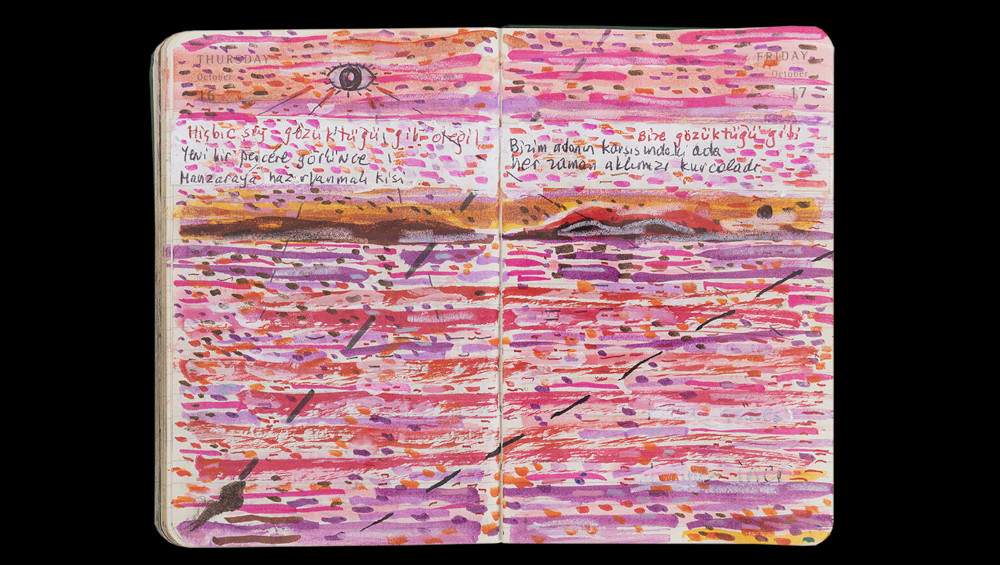From Nov. 18, 2023 to March 17, 2024, the Labirinto della Masone will host a major exhibition dedicated to Orhan Pamuk, winner of the Nobel Prize for Literature in 2006, and his unpublished graphic production. ORHAN PAMUK. Words and Images, this is the title of the exhibition curated by Edoardo Pepino and with a multimedia project by NEO (Narrative Environments Operas), presents twelve notebooks that for ten years, day after day, the famous writer has been filling with words and images. The notebooks will be commented on and narrated by the author himself in a never-before-seen documentary-interview, and deepened through projections that will take visitors deeper into the Turkish writer’s world.
Until now, these colorful, often dreamlike images have remained unknown even to fans of Pamuk’s work. Indeed, notoriety as a writer prevails over this pictorial gift of his, but the graphic medium proved necessary to express concepts that cannot be expressed by words alone: the need to write and draw together is the premise, therefore, of an instinctive artistic practice in which literature, thought and drawing complement each other.
The first illustrations date back to 2009 and the latest to this year, as his graphic production continues uninterruptedly every day: visual poetry, dreamy atmospheres and travel notes alternate between the pages of the notebooks, “filtered” from Pamuk’s inner world. Many times as a writer, Pamuk has reiterated his appreciation of artists such as Anselm Kiefer, Raymond Pettibon, and Cy Twombly.
In the first room of the exhibition, notebooks selected by the author together with the curator will be displayed open, showing a selection of the most significant images. Digital screens will provide a more complete view of their contents, allowing visitors to move page by page through the illustrations, enlarging them and reading their translated texts. The video projection of anunpublished interview with Orhan Pamuk, set up in the second room, will allow visitors to delve into his poetics, delving into the relationship between word and image.
The last part of the exhibition leads the audience to a more intimate dimension: in fact, the setting of the third room is inspired by the writer-artist’s home. Pamuk’s landscapes are almost never depicted from the position of those immersed in them: there is a separation between the eye on the world and the world itself, and the windows become the key element, from which a reality both near and distant at the same time opens up. Eight screens will ideally evoke the windows of the dwelling, project images from the notebooks alternating with photographic images and diary notes.
Turkish carpets like the ones Pamuk himself describes in his memoirs will eventually be placed in the room: a metaphor for the author’s deep rootedness to the personal dimension, they will invite visitors to access his inner world.
On the occasion of the exhibition, Moleskine, in collaboration with Franco Maria Ricci, is presenting in a special, limited edition, a “conceptual catalog” of the exhibition, which everyone will be able to compile themselves in handwriting.
Hours: Daily, except Tuesdays, from 9:30 a.m. to 6 p.m. Last admission at 4:30 p.m. Admission is included in the Masone Labyrinth entrance fee, which also includes access to the bamboo labyrinth and Franco Maria Ricci’s permanent collection.
 |
| At the Labyrinth of the Masone a major exhibition dedicated to Orhan Pamuk and his notebooks |
Warning: the translation into English of the original Italian article was created using automatic tools. We undertake to review all articles, but we do not guarantee the total absence of inaccuracies in the translation due to the program. You can find the original by clicking on the ITA button. If you find any mistake,please contact us.